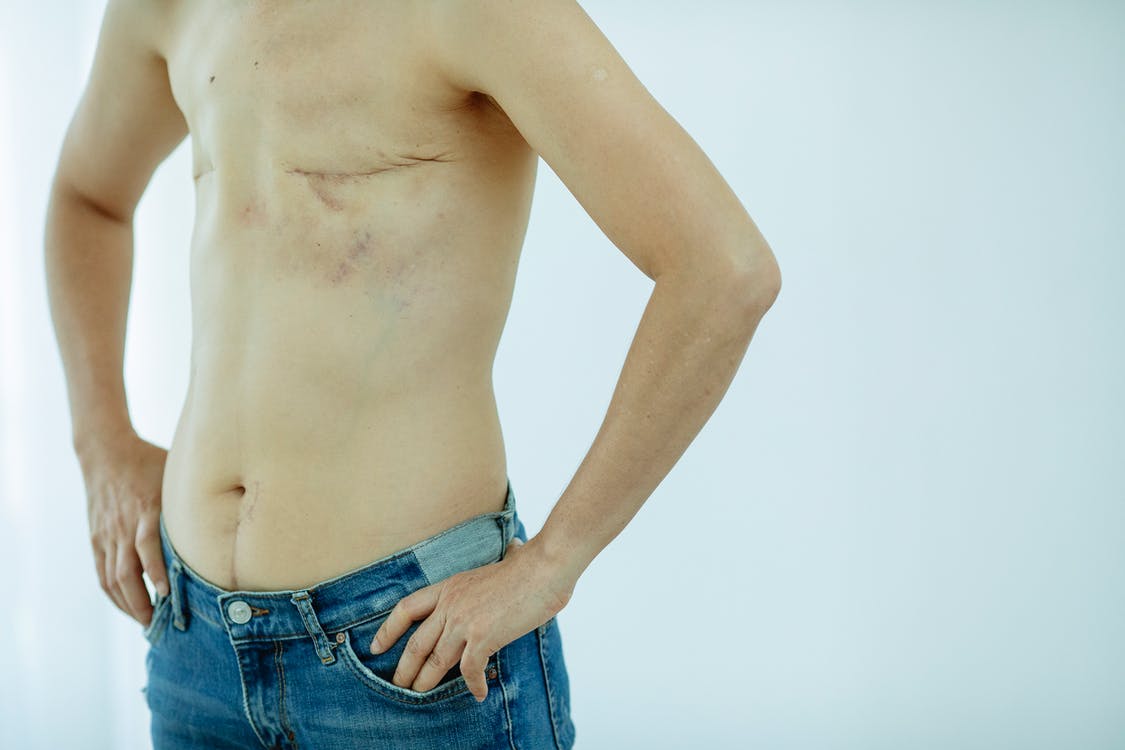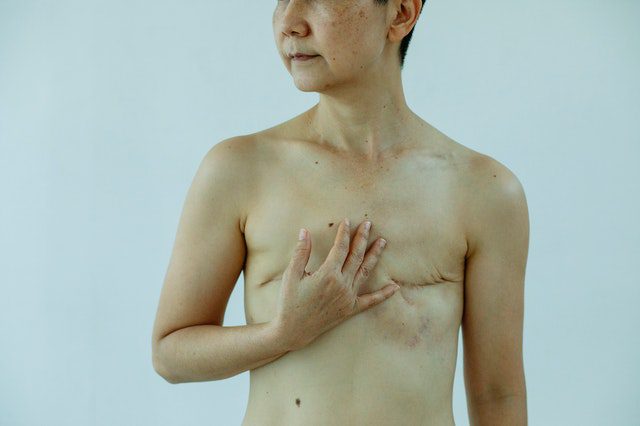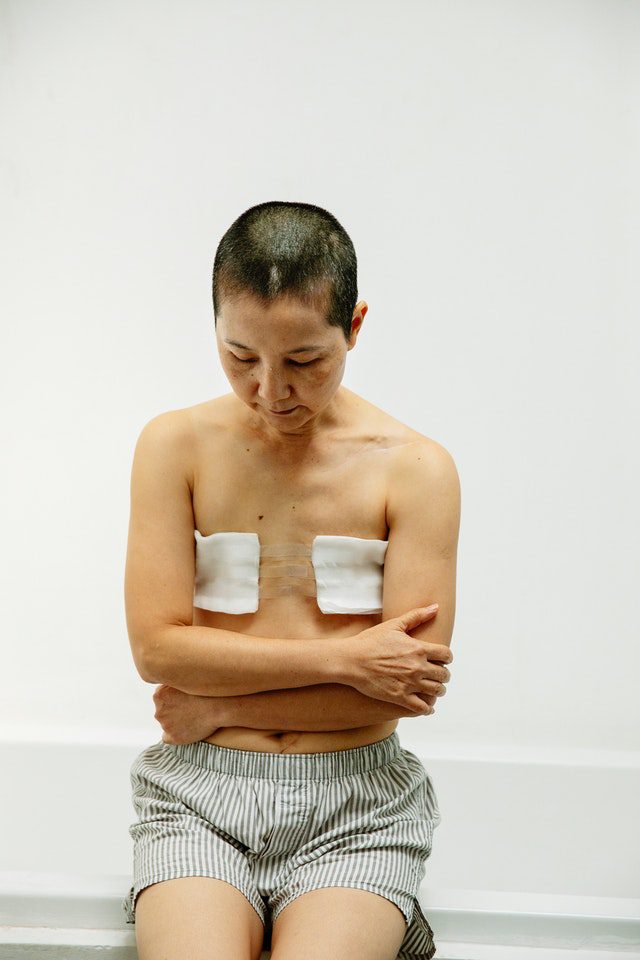
« Dog Ears » After A Double Mastectomy
A top surgery, breast excision, or chest reconstruction surgery, is when a mastectomy is carried out for a transgender person to remove any and all breast tissue from their chest. This cosmetic surgery reconstructs the chest into something flatter and more neutral, or more masculine. There are many factors that come into play that could affect the result of the surgery, some of which could account for developing « dog ears » after the completion of the procedure. « Dog Ears », unfortunately, occur fairly often. Luckily, there are ways to treat or even reduce the risk of « dog ears » from forming.


« Dog ears » Defined
In some cases, having breast surgery can result in excess skin, residual fat, or just loose skin forming what are called « dog ears ». « Dog ears » are also a common occurrence after men or women undergo tummy tuck surgery after liposuction.
Typically, the technique used by plastic surgeons is to close the surgical wound in a straight line. This can cause problems however, since the area of skin that has been removed is rounded. Excess tissue left over after the surgery can then pucker, or cause protruding skin near the armpit, around the outer corner of the incision scar. The name « dog ears » comes from the appearance of these skin flaps.
« Dog ears » can cause discomfort as well as be displeasing to the patient. These are some of the most common reasons why chest revision surgery is performed by plastic surgeons. There are steps that a board-certified plastic surgeon can take in order to prevent « dog ears » from happening, and techniques that can be used to eliminate them should they form.
Prevent « Dog Ears » After Breast Surgery
« Dog ears » can’t always be avoided. Even in the most successful of surgeries, patients could be left with « dog ears » if all the excess skin could not be removed during the first surgery. However, the fewer skin patients have to be removed, the lower the likelihood of developing « dog ears ». There are some risk factors that make « dog ears » more likely to develop, and removing these could help reduce your chances.
Most Common Reasons for « Dog Ears »
Weight plays a large role in developing « dog ears ». Larger patients, or patients with large breasts, run a higher chance of developing these skin flaps, as there is more excess skin breast surgeons would need to remove. Looking after your body health, and maintaining an ideal body weight can reduce your chances to develop « dog ears ».
Another thing commonly attributed to causing « dog ears » is the size of the incisions. When a patient is willing to have a slightly larger incision made during their first surgery, this could also help reduce the chances of ending up with « dog ears ». While this may cause more scarring, there is also the possibility that there won’t be any need for further procedures.
Preventative Measures
Apart from attempting to remain at ideal body weight and agreeing to a slightly larger incision, it is also vital to put in your best efforts to follow the post-operation care instructions given to you by your surgeon, so that your wound can heal properly. This will ensure an easier recovery, reduce your chances of infection or complications, and reduce scarring. All of which could reduce your chances of getting « dog ears ».
There are also surgical techniques that could be used during the first procedure, which could help to prevent « dog ears » from forming. One of these is adjusting the shape of the incisions, and many doctors opt for a fish-shape or Y-shape closure. Others opt instead for a teardrop or L-shaped incision. Surgeons could also make use of longer incisions.
These other techniques involve their own risks, however, such as additional scarring or other complications. It is best to have realistic expectations, wait before going through with the first surgery, and schedule a consultation with your surgeon first, so as to decide together which procedure would be best for you and discuss your options.
Treatment
If all else fails, however, and you are left with « dog ears » after healing from your first procedure, there are steps you can take. Most commonly, revision surgery is used to achieve a flatter appearance of the wound/scar. It is also easier in a second surgery to ensure that the skin is pulled tight, than with the first procedure where a lot of loose skin was still present.
While this does mean going under local anesthesia again and possibly developing more scars, it’s likely that patients will be much more pleased with the appearance of their chest after revision surgery.

« Dog Ear » After Mastectomy FAQs
How common are « dog ears » after top surgery?
« Dog ears » are incredibly common in surgeries such as these, where a lot of skin and fatty tissue is removed over a large area. They are also said to be more common in heavier patients, or patients with bigger breasts, as there is more skin and fatty tissue that needs to be removed.
Do dog ears go away by themselves?
In some rare cases, « dog ears » are only caused by swelling at the point of surgery, and they can go away by themselves once the swelling subsides.
However, if they are still there long after your swelling has gone away, it is most likely due to the surgical technique or something else, and it is advised that you contact your surgeon.
What does a mastectomy incision look like?
These incisions are most commonly performed to end up as a straight line across one side of the chest. This can be problematic, though, and many surgeons are opting for other shapes that follow the natural contour of the skin and body.
What increases the likelihood of « dog ears » after plastic surgery?
There are a few risk factors that could cause « dog ears », such as:
- Having a loose or an excess of skin, due to being overweight or another medical condition
- Patients requesting a shorter incision
- Lack of proper after-care of the wounds and scars



